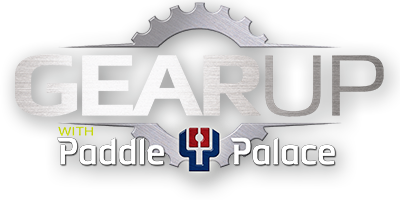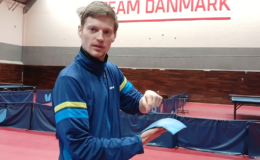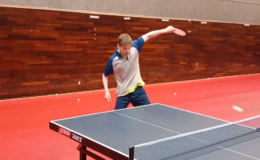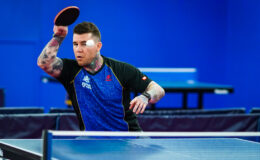By Larry Hodges, USATT Hall of Famer and National Coach
One of the more subtle ways of turning an effective serve into an ineffective one is to telegraph it. Players often telegraph their serves for years and never realize it. They get away with it because most players don’t pick up on it, and so don’t realize the server is essentially signaling the serve in advance. However, as you reach higher levels, opponents pick up on these subtle signs more often, often subconsciously, and the server doesn’t realize it – he just thinks he’s playing stronger opponents who return serves better. The most common example are servers that telegraph whether they are serving long or short.
As an example, I recently played a top player, rated about 2350. He would serve short most of the time, but about every fourth serve he’d switch to a deep serve to my backhand. I could see it coming every time (and would step around and loop it with my forehand), but it took two games before I figured out what was giving it away – whenever he served deep, he’d set up with his racket slightly farther back and more closed than when he was going to serve short. I beat him three straight, and then told him what had happened.
There are many other examples; players tend to set up differently for different serves. They may start with their racket in one position to serve short backspin, another for sidespin and topspin serves, perhaps another for no-spin. Or it might be something more obvious. For example, many players like to high-toss serve, but can’t really control them. And so the serve might always be predictably long, or the same type of spin over and over. (Many high-tossers serve only backspin serves that go long.) One player I know always sticks his tongue out at the start of his serve motion when he’s serving deep! (I used this against him for years, both as a player and when coaching against him.) At the recent U.S. Open one opponent had an obvious different motion for his short and long serves, and so very early in his service motion perceptive receivers were already moving in for short serves or preparing to loop the long ones.
How do you read a telegraphed serve? If you observe the server, you might not consciously see differences in his serve motion any more than you consciously see differences in, say, people’s faces. But subconsciously, just as you can recognize a person’s face without consciously seeing what makes it different, you can subconsciously recognize different motions that go with different serves. Once you can do that, you can try to figure out what it is that gives the serve away – but surprisingly, from a player’s point of view, that’s not important. All that’s important is that you are able to recognize what the serve is in advance. Let your subconscious be your guide.
How do you avoid telegraphing the serve? It’s actually very simple. Set up each time as if you plan to serve the same serve, and only after you are set to serve do you “change” your serving plan to what you really want to serve. This doesn’t mean you can’t decide earlier what serve you are going to use; it means that after deciding what serve you are going to use, you still consciously set up as if you are serving your most common serve, and then make the mental switch to the serve you are really going to use.
Five-time U.S. Champion Dan Seemiller once told me that he could often tell what an opponent was serving before they served. The subtle clues are often there, you just have to look for them, both consciously and subconsciously. Trust your subconscious when it picks up on something. It usually knows what it’s doing.



